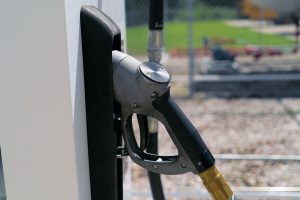Powertrain Control Module
System Overview
PCM I/O Devices
Whenever possible the OEM production I/O devices are retained during the LPI conversion.
A list of the I/O devices that are different from the OEM vehicle can be found in Table 2.
| Removed Gasoline Component | Replacement Propane Autogas Component | Functional Differences |
|---|---|---|
| Gasoline Fuel Injector | Propane Autogas Fuel Injector | Unique Slopes and Offsets for Propane Autogas Injectors |
| Injection Pressure and Temperature Sensor (IPTS): 30kΩ Thermistor & 0-90psi Transducer housed in one body | IPTS 10kΩ
Thermistor 0-500psi Transducer housed in one body |
Injection Temperature Sensor and Injection Pressure Transducer Calibration Modified for Increased Range |
|
Fuel Level Sender |
Fuel Level Sender |
Custom Fuel Level Sender Resistor Card/Float Arm to match OEM Sender Output |
|
FTPT |
None |
Part Deleted (Ford F-150, Ford F-250/Ford 350) Retained as vapor system pressure transducer (Ford E-Series, Ford E-350, Ford E-450) |
|
EVMV |
None |
Part Deleted (Ford F-150, Ford F-250/Ford 350) |
|
CANVNT |
None |
Part Deleted (Ford F-150, Ford F-250/Ford 350) |
|
N/A |
Flow Control Solenoid* |
See Flow Control Solenoid Description |
|
N/A |
Smart Relay Module (SRM) |
Reads IPTS input on vehicles where gasoline system does not use one; controls flow control and other system relays where gasoline PCM lacks sufficient capability |
Table 2: I/O Changes
*Generation 1 only. Please call 800.59.ROUSH with any questions.
Strategy and Calibration
The PCM calibration consists of a modified version of the OEM strategy and a propane autogas specific calibration.
Control System Strategy
The ROUSH CleanTech liquid propane autogas strategy is built off of the OEM strategy with the addition of new logic to drive and monitor the flow control solenoid. Because the strategy is based off of the OEM strategy, the OEM PCM retains all fuel control and diagnostic functions. No modifications are made to the scan tool interface features of the logic except to add the propane autogas specific DTC’s. The propane autogas DTC’s are stored in the PCM memory and are cleared via the OEM strategy’s fault state controller.
Calibration
Changes to the OEM calibration are made in the following areas:
Engine:
- Modified I/O scaling as required
- Modified spark and fueling functions as required by physical properties of propane
- Disabled purge feature
Transmission:
- No changes required
Diagnostics:
- Disable (Ford F-150, Ford F-250 / Ford 350) or modify purge monitor and related component monitors













